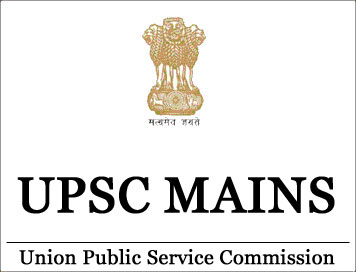(HOT) UPSC Current Affairs 2025 PDF
NEW! The Gist (NOV-2025) | E-BOOKS
(Download) UPSC IAS Mains 2015: Botany (Paper -1 & Paper-2) Optional Question Paper

(Download) UPSC IAS Mains 2015: Botany (Paper -1 & Paper-2) Optional Question Paper
Subject: Botany (Paper -1 & 2) Optional
Exam Date: 23rd December 2015
Botany (Paper -1)
Section-A
1. Briefly describe the following in not more than 150 words each : 10x5=50 marks
-
Role of microbes in soil nutrient cycling 10 marks
-
Algae as bioindicators 10 marks
-
Concept of Progymnosperms 10 marks
-
Chemical nature of viroids and their transmission in plants 10 marks
-
Evolution of sexual, reproduction in fungi 10 marks
2.(a) Describe the range of vegetative structures with suitable diagrams in volvocales and their phylogenetic relationships. 20 marks
(b) Describe the disease symptoms, causal organism and the control measures of the loose smut of wheat. 15 marks
(c) Draw well labelled diagram of the L.S. of Anthoceros sporophyte. Discuss the evolutionary significance of Anthoceros also. 8+7=15 marks
3.(a) Draw well labelled diagram of the T.S. of Teleutosorus of Puccinia and give a brief description of the same. 15 marks
(b) Describe the symptoms, causal organism and the control measures of white rust of crucifers. 15 marks
(c) Discuss the distribution of living Gymnosperms in India and their economic importance. 20 marks
4.(a) Give the name of the causal organism, disease symptoms and disease control measures of the following :
Red rot of sugarcane and Late blight of potato 12.5+12.5=25 marks
(b) Give an account of sexual fruiting bodies in Ascomycetes. 15 marks
(c) Describe the method of vegetative reproduction in Bryophytes. 10 marks
Section-B
5. Describe the following in about 150 words each; 10x5=50 marks
-
Mycotoxins 10 marks
-
Concept of totipotency in higher plants 10 marks
-
Dye yielding plants 10 marks
-
Ethnobotanical knowledge and beliefs in species conservation 10 marks
-
Use of somaclonal variations in crop improvement 10 marks
6.(a) Write an account of the following families with respect to floral structures. Give the botanical names of three important plant species belonging to each of the families and specify their uses :
Ranunculaceae and Fabaceae 10+10=20 marks
(b) Discuss the components of a full-fledged Botanical garden. 15 marks
(c) Give an account of misappropriation and its utility towards ex-situ conservation of rare and endangered plants. 15 marks
7.(a) Describe the oil yielding plants of India and their economic importance. 12.5 marks
(b) Distinguish the Androecium of Malvaceae, Asteraceae and Asclepiadaceae from each other. 12.5 marks
7.(c) “Somatic hybrids can be characterized by a variety of methods.” Substantiate the above statement. 12.5 marks
(d) Compare the floral characters of the family Solanaceae and Malvaceae. 12.5 marks
8.(a) Give an account of Vavilov’s “Centres of Origin” of the cultivated plants. 17 marks
(b)Describe the method of production of Androgenic haploids. 17 marks
(c) Describe the anomalous secondary growth in monocots with suitable diagram. 16 marks
Botany (Paper -2)
Section-A
1. Explain the following :— 10x5-50 marks
-
Mitochondria 10 marks
-
Extrinsic and Intrinsic proteins 10 marks
-
Genetic code 10 marks
-
Hybrid vigour 10 marks
-
Self-incompatibility. 10 marks
2.(a) Distinguish between prokaryotic and eukaryotic cell. 15 marks
(b) Discuss briefly the evidence of organic evolution. 15 marks
(c) Describe briefly the various methods of gene transfer. 20 marks
3.(a) Describe the structure, behaviour and significance of special types of chromosomes. 15 marks
(b) What is the role of RNA in the origin and evolution of living organisms ? 20 marks
(c) Describe the method of developing disease and insect resistant varieties through back cross method of breeding crop varieties. 15 marks
4.(a) Describe the numerical variation in chromosomes. 15 marks
(b) What is the biochemical and molecular basis of mutations ? 20 marks
(c) Discuss briefly the mechanism of disease resistance. 15 marks
Section-B
5. Explain the following :— 10x5=50 marks
-
ATP synthase 10 marks
-
Senescence 10 marks
-
Conservation of biodiversity 10 marks
-
Species based mechanism of invasion 10 marks
-
Mainstream forms of renewable energy. 10 marks
6.(a) Describe the process of biological nitrogen fixation with special emphasis on nitrogenase. 15+5 marks
(b) Discuss the principal systems of environmental pollution and the reasons thereof. 15 marks
(c) Describe different sub-mitochondrial complexes associated with electron transport chain of aerobic respiration. 15 marks
7.(a) Enumerate the salient features of water relations in crop plants. 15 marks
(b) What are the characteristics of phytochrome induced responses in flowering of higher plants ? How do they control flowering ? 10+5 marks
(c) Distinguish between natural and social forests. Discuss in detail the various objectives of social forestry. 5+15 marks
8.(a) Describe the mechanism of C02 fixation in CAM plants. 15 marks
(b) Describe any four principal phytogeographical regions of India. 15 marks
(c) Discuss the various advantages and limitations of phytoremediation. 20 marks
DOWNLOAD 10 YEARS UPSC MAINS BOTANY PAPERS PDF
DOWNLOAD UPSC MAINS G.S. (1-4) SOLVED PAPERS PDF
DOWNLOAD UPSC MAINS G.S. 10 Year PAPERS PDF
DOWNLOAD UPSC IAS EXAMS E-BOOKS PDF
UPSC Mains General Studies Study Kit
»» Go Back to Main Page
Courtesy: UPSC


